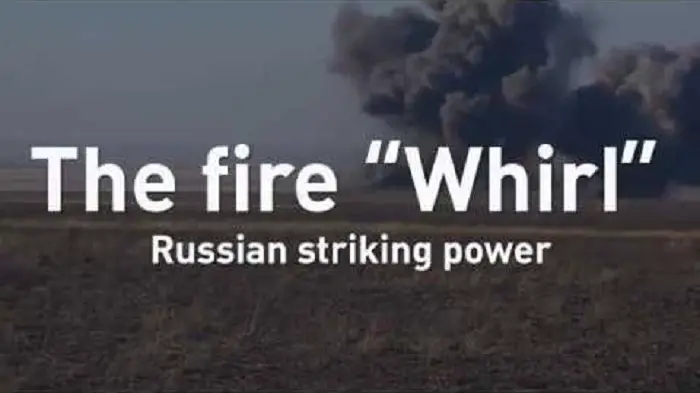The BM-30 Smerch (Whirlwind or 9A52-2) is a Russian heavy multiple rocket launcher. The system is intended to defeat personnel, armored, and soft targets in concentration areas, artillery batteries, command posts and ammunition depots. It was designed in the early 1980s and entered service in the Soviet Army in 1989. When first observed by the West in 1983, it received the code MRL 280mm M1983.
The first confirmed combat uses of the Smerch were in two war zones in 2014. Syrian military forces used the system against rebel forces during the Syrian civil war, including in fighting in Jobar. It was also used by Russia-backed militants to deliver explosive and cluster munitions to Ukrainian military positions and locals of Donetsk and Lugansk regions in the War in Donbass. Several have been seen in use by pro-Russian rebels.The Russian Ground Forces used the BM-30 in Syria in October 2015 during the Russian intervention in Syria.
The main components of the RSZO 9K58 “Smerch” system are the following:
Rockets 9M55 or 9M528 (in containers);
BM 9A52-2 launch vehicle;
TZM 9T234-2 transloader with an 850 kg crane and 12 spare rockets;
Automated fire control equipment in the command post 1K123 “Vivary”;
Maintenance vehicle PM-2-70 MTO-V;
Set of arsenal equipment 9F819;
Training facilities 9F827 and 9F840.
The 300mm rockets with a firing range of 70 and 90 km and various warheads have been developed for the Smerch MLRS.
- The 9A52-2 vehicle with the automated system ensures:
- delivery of fire from an un-surveyed fire position;
- laying of the launch tube cluster with the crew staying in the cabin and without using aiming points;
- autonomous determination of an azimuth of the launch tube cluster’s longitudinal axis;
- visual representation of graphical information for the launch tube cluster laying, the route of vehicle movement and location as well as a point of
- destination and direction of movement on the video terminal;
- increase in MLRS survivability owing to reduced time of staying at a fire position;
- increased comfort for the laying operator, especially in adverse weather conditions and at night;
- increased independent operation owing to the navigation and survey equipment, which allows the vehicle to rapidly change fire positions and move autonomously;
- reduction of the combat crew.















